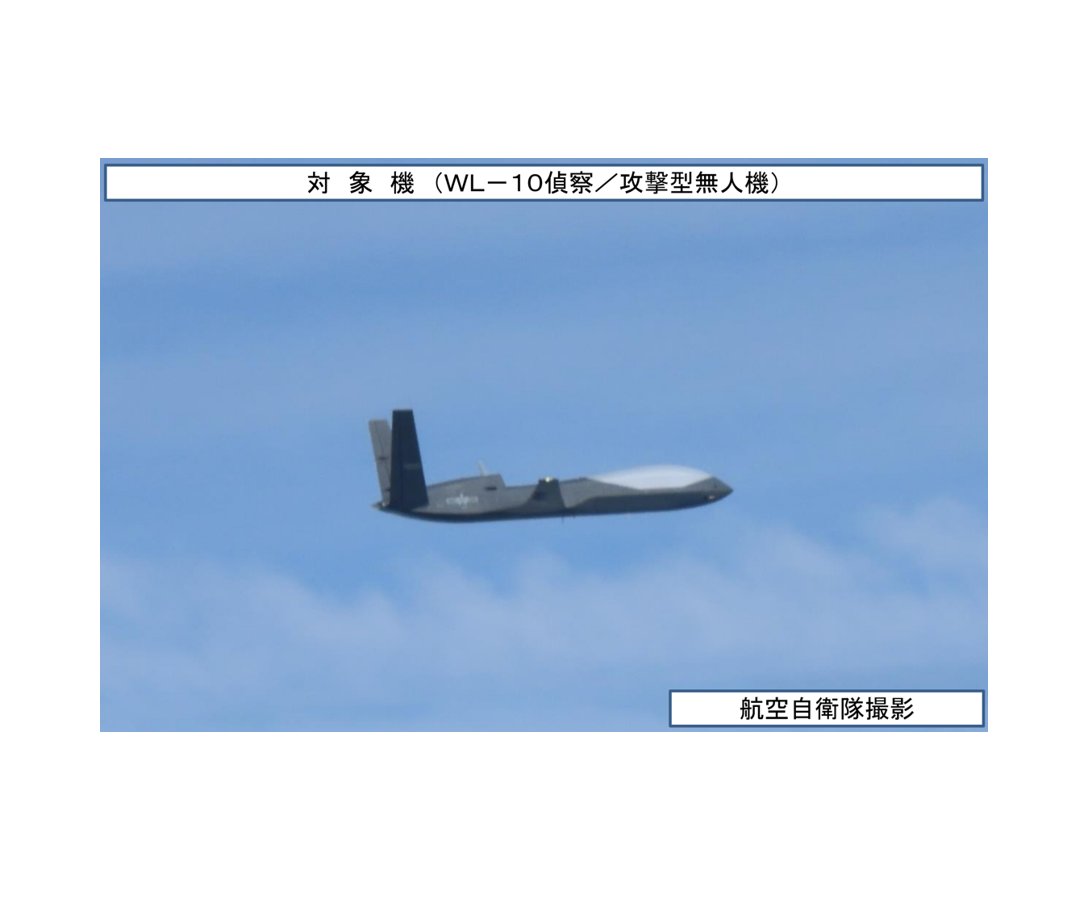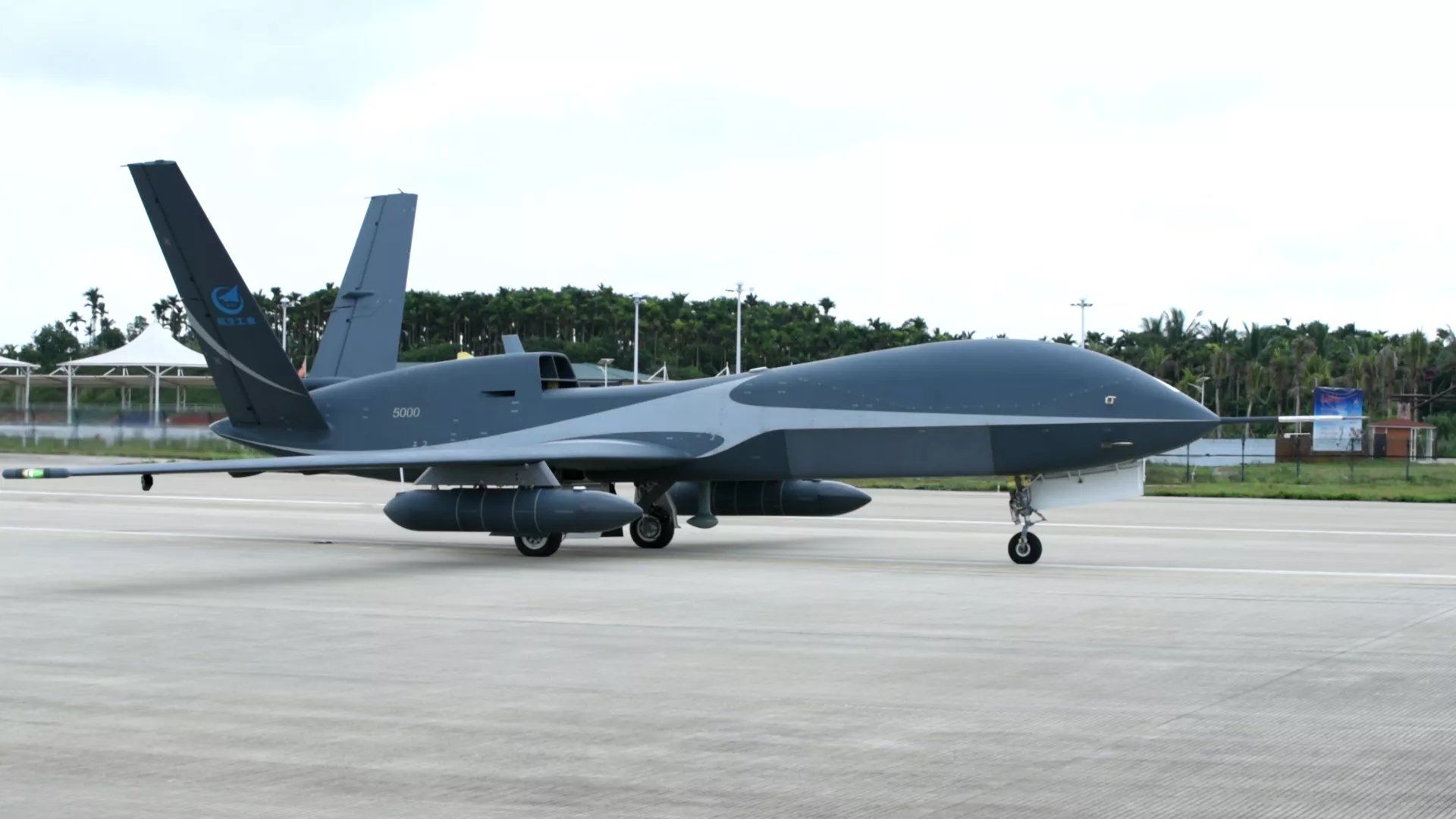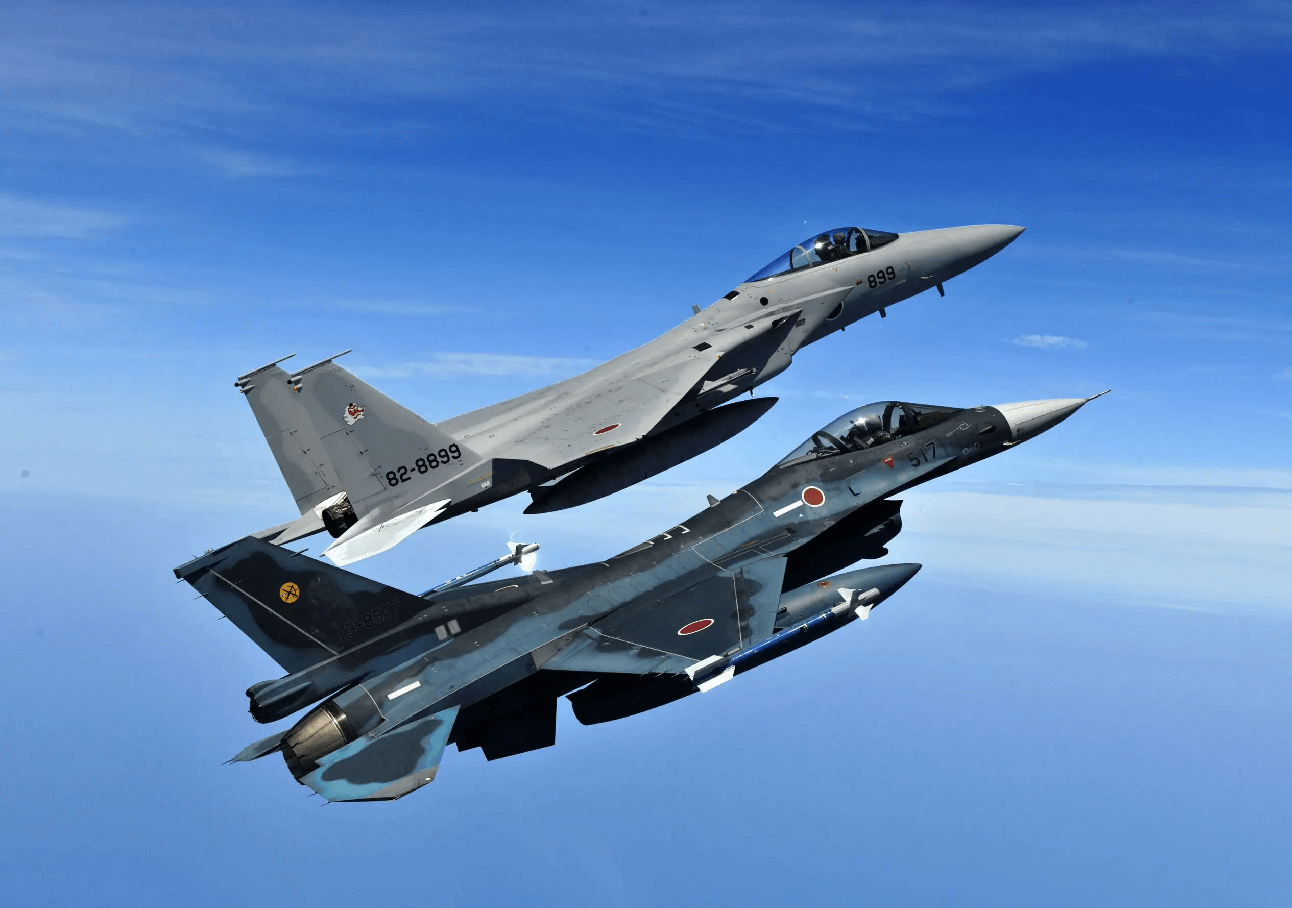On May 27, the Chinese PLA Air Force’s WL-10, an unmanned aerial vehicle designed for high-altitude, long-endurance missions, carried out flight activities above the East China Sea.
Japan’s Joint Staff Office (JSO), which oversees the operations of the Ground, Maritime, and Air Self-Defense Forces, announced that the incident prompted an immediate response from Japan’s Air Self-Defense Force, which scrambled fighter jets to intercept the intruding UAV.
The interception was the first for this particular UAV model. The Japanese defense forces identified it during airspace violation protocols.
Tokyo also published a photograph depicting the drone and its trajectory. However, the Joint Staff Office refrained from disclosing the specific aircraft dispatched to intercept the drone.
The JSO took to X (formerly Twitter) to report the incident, stating, “On Monday, May 27, 2024, a single Chinese WL-10 reconnaissance/attack unmanned aerial vehicle (UAV) flew over the airspace of the East China Sea, prompting the emergency launch and response of fighter jets from the #AirSelfDefenseForce #SouthernAirDefenseForce. This marks the first time this aircraft has been identified during an airspace violation response by the Japanese Navy.”

Japan’s Defense Ministry officials said that the WL-10 reconnaissance and strike drone was observed flying eastward from mainland China. The drone then took a northeasterly course before returning along the same route it initially took.
The WL-10 drone is a relatively new addition to China’s drone arsenal. It was first showcased at the Nanchang Airshow in 2020, and in 2022, reports indicating its adoption by the PLA Air Force surfaced.
While the specific motive behind the WL-10’s flight remains unknown, China has been expanding its drone operations near Japan’s frontiers in recent years.
The uptick in Chinese drone flights near Japan is believed to be related to strategic considerations, particularly Taiwan. Analysts point to China’s anti-access, area denial (A2/AD) framework, which aims to deter foreign intervention in contingencies such as those involving Taiwan.
In March 2024, the People’s Liberation Army’s high-flying WZ-7 Soaring Dragon reconnaissance drones undertook a mission over the Sea of Japan for the first time, with its route indicating a crossing over Russia or North Korea.
Previous instances include the TB-001 combat drone flying through the Miyako Strait in 2021 and 2022, indicating a pattern of surveillance and potential targeting of US military assets.
The WL-10 Drone
The Wing Loong-10 is a High-Altitude Long Endurance (HALE) unmanned aerial vehicle with certain stealth features. The drone boasts a wingspan of about 10 meters and a height of nearly 2 meters.
It features a large trapezoidal dual dorsal engine intake and dual truncated concealed exhausts, indicating the use of two engines.
Capable of carrying a diverse array of ammunition, including LD-16, BBM2, AG-300M, LS6100, GB-4, BA21, YJ-9E, FT-7, and TL-20, the WL-10 is believed to be powered by a pair of indigenously developed Wo Shan-500 (WS-500/Turbofan-500) small turbofan engines.
Military analysts have observed that the WL-10 entered service as a dedicated Electronic Warfare (EW) UAV. The drone is designed to locate electromagnetic signals between 100-300MHz at a range of 200 kilometers and features a maximum take-off weight of 3200 kilograms.
It has a ceiling height of 12,500 meters and a top speed of 520 kilometers per hour. The WL-10 can conduct electronic surveillance and reportedly has an endurance of over eight hours.

Chinese military aviation expert Rick Joe previously shared insights with EurAsian Times, noting that the drone is relatively small, especially when compared to larger models like the US-made Global Hawk or China’s WZ-7 UAV.
He mentioned that it possesses minor signature reduction features and appears to be primarily an electronic warfare (EW) UAV. However, he could not say whether its capabilities included active electronic countermeasures (ECM), electronic intelligence (ELINT), or other functions.
The WL-10’s advanced capabilities provide China an advantage in airborne intelligence gathering within the first island chain, which includes Japan and Taiwan.

Experts believe that in its electronic warfare role, the WL-10 could be equipped to collect data on air defense systems, adding to China’s extensive electronic warfare resources.
Nonetheless, the increasing frequency of Chinese drone operations near Japan’s frontiers, including the recent flight of a WL-10 drone over the East China Sea and previous combat drone missions, underscores Beijing’s strategic focus on the region.
In addition to its use by Beijing, the Wing Loong-10B, an export variant of the Wing Loong-10 (the WL-10), is set to enter service with the Royal Saudi Air Force (RSAF).
- Contact the author at ashishmichel(at)gmail.com
- Follow EurAsian Times on Google News




